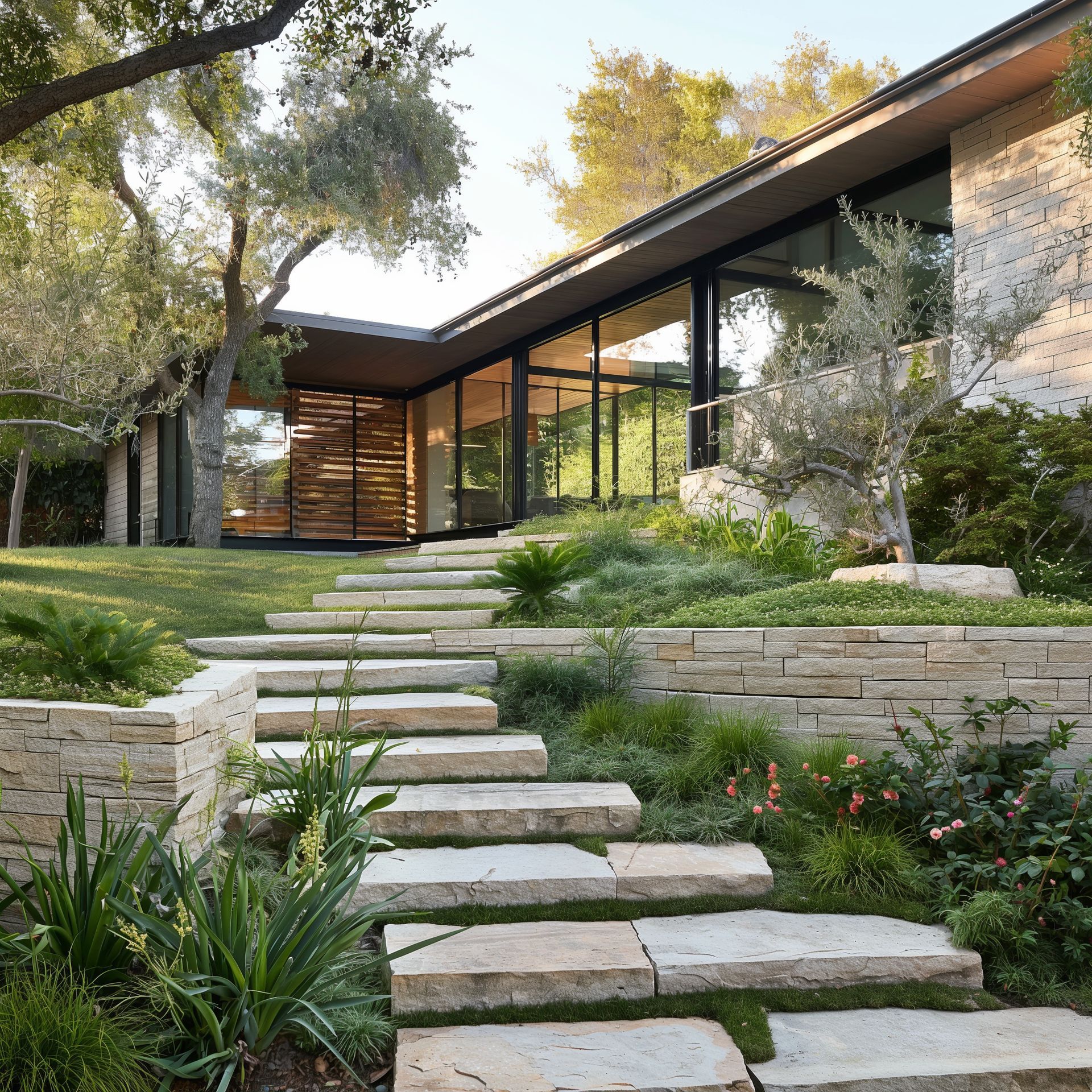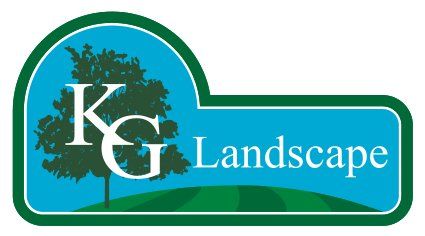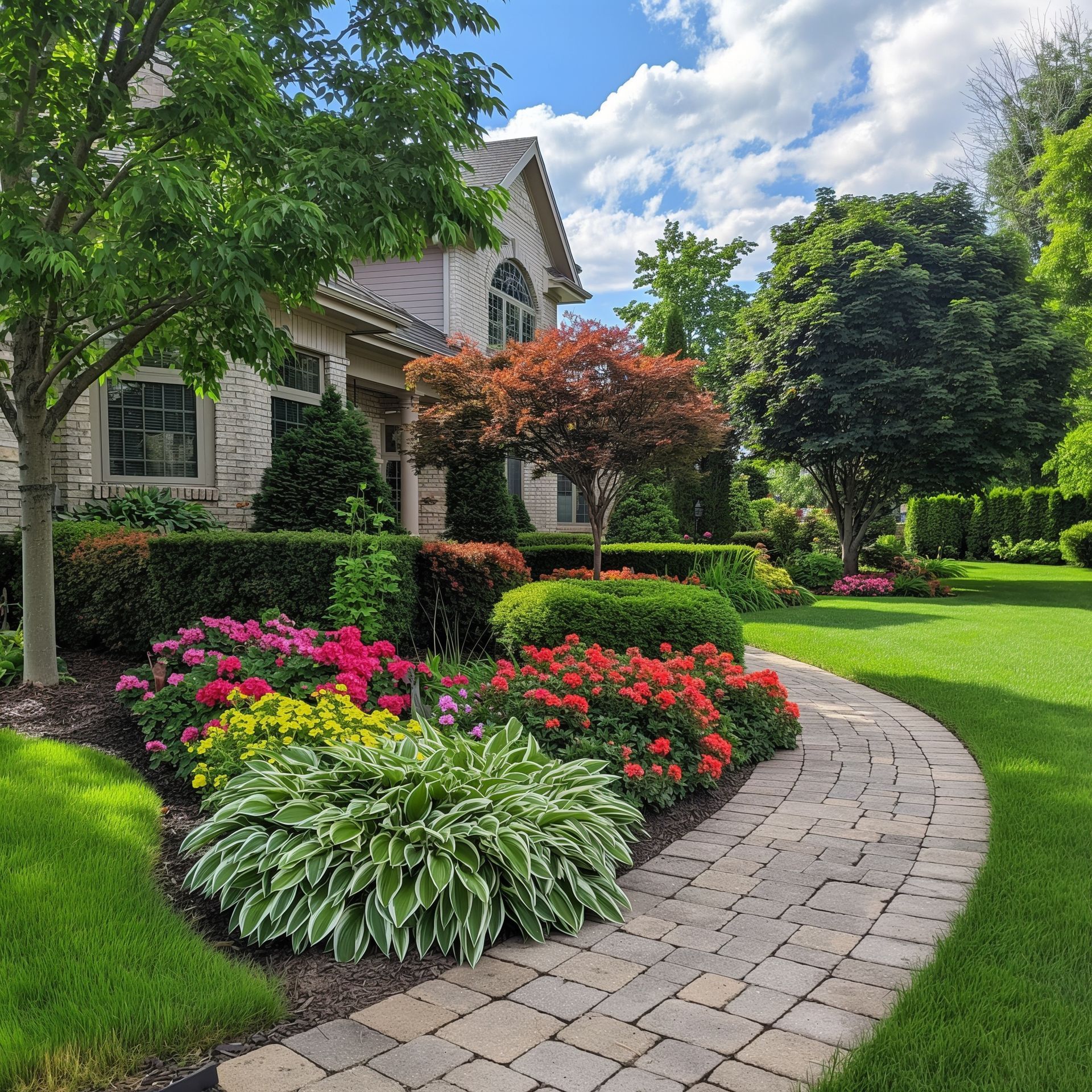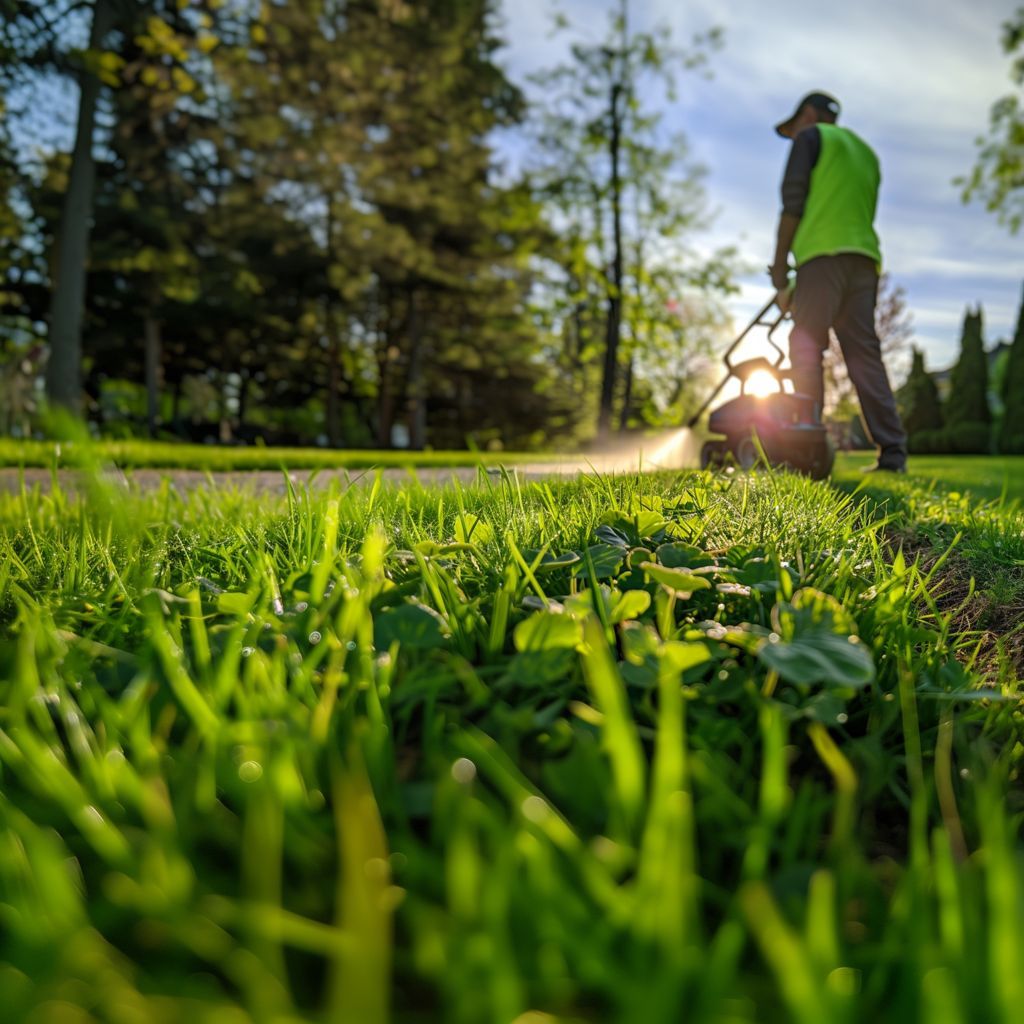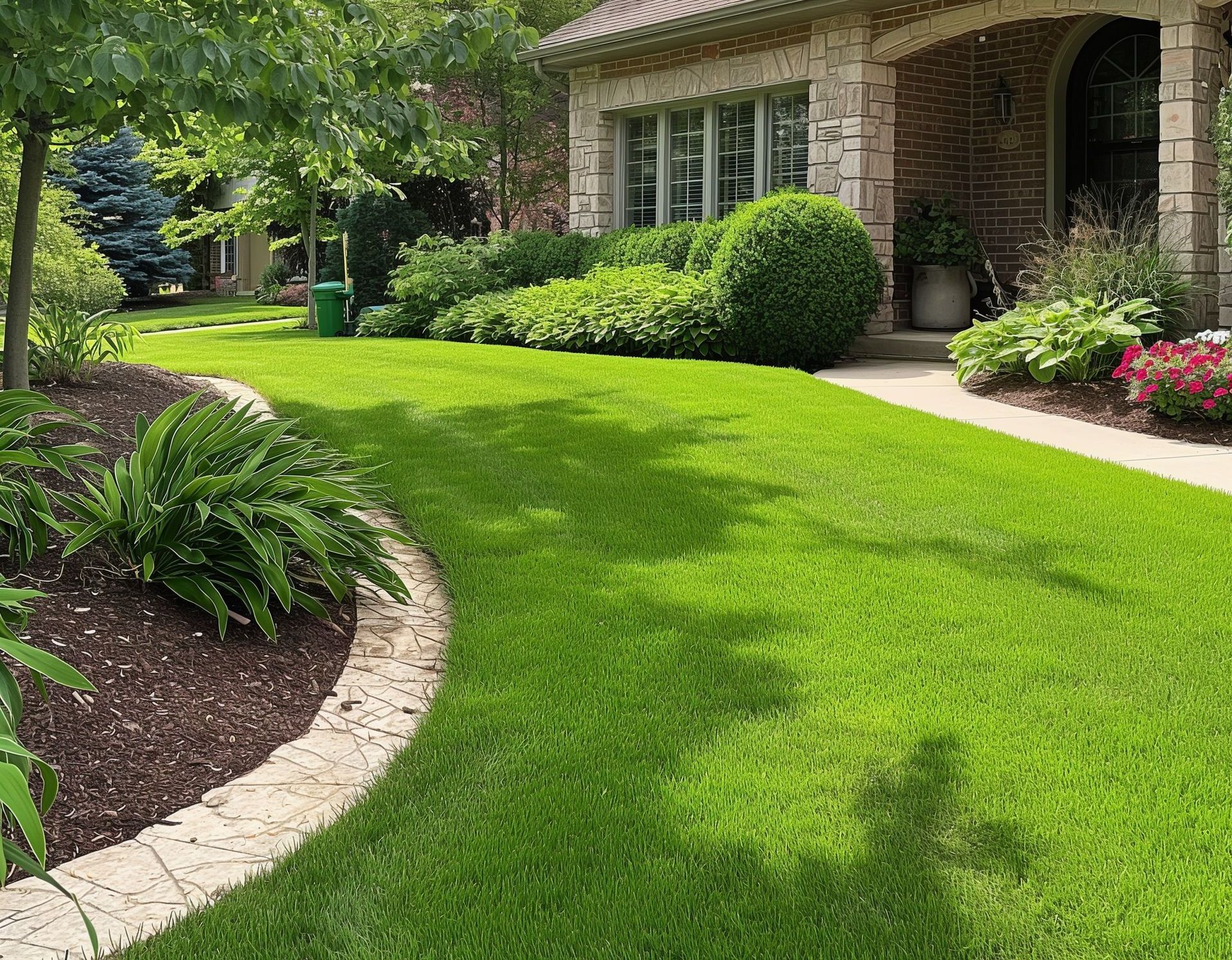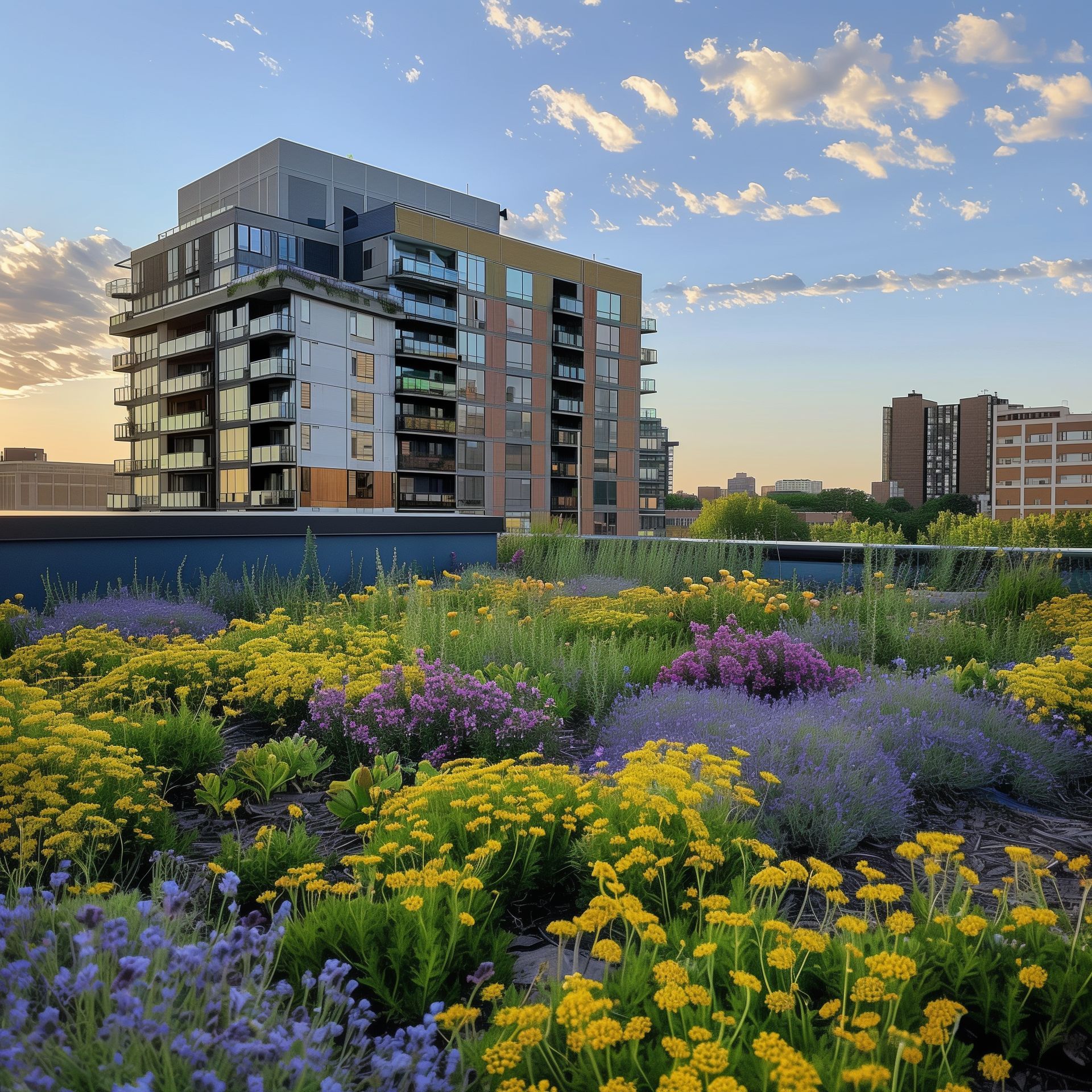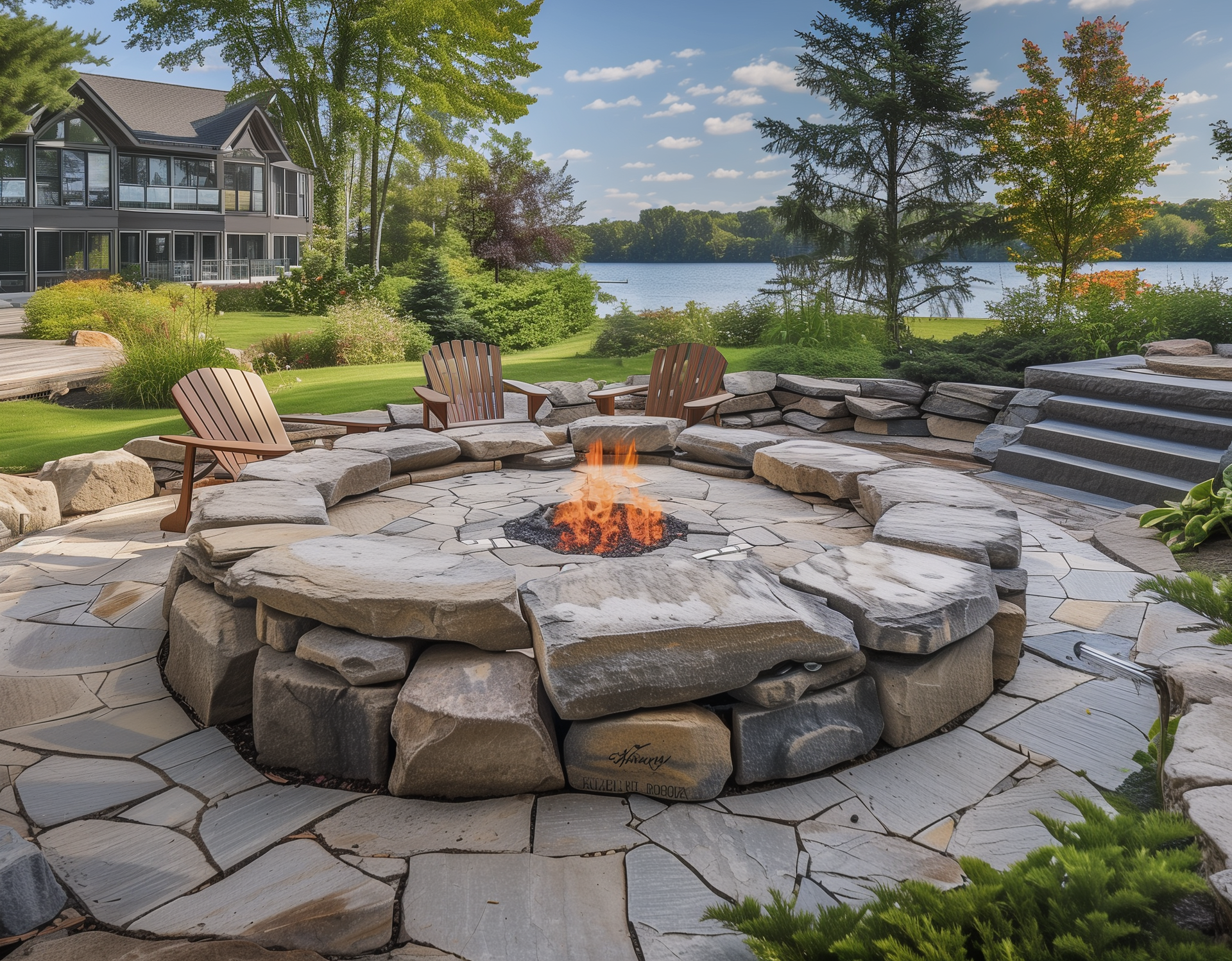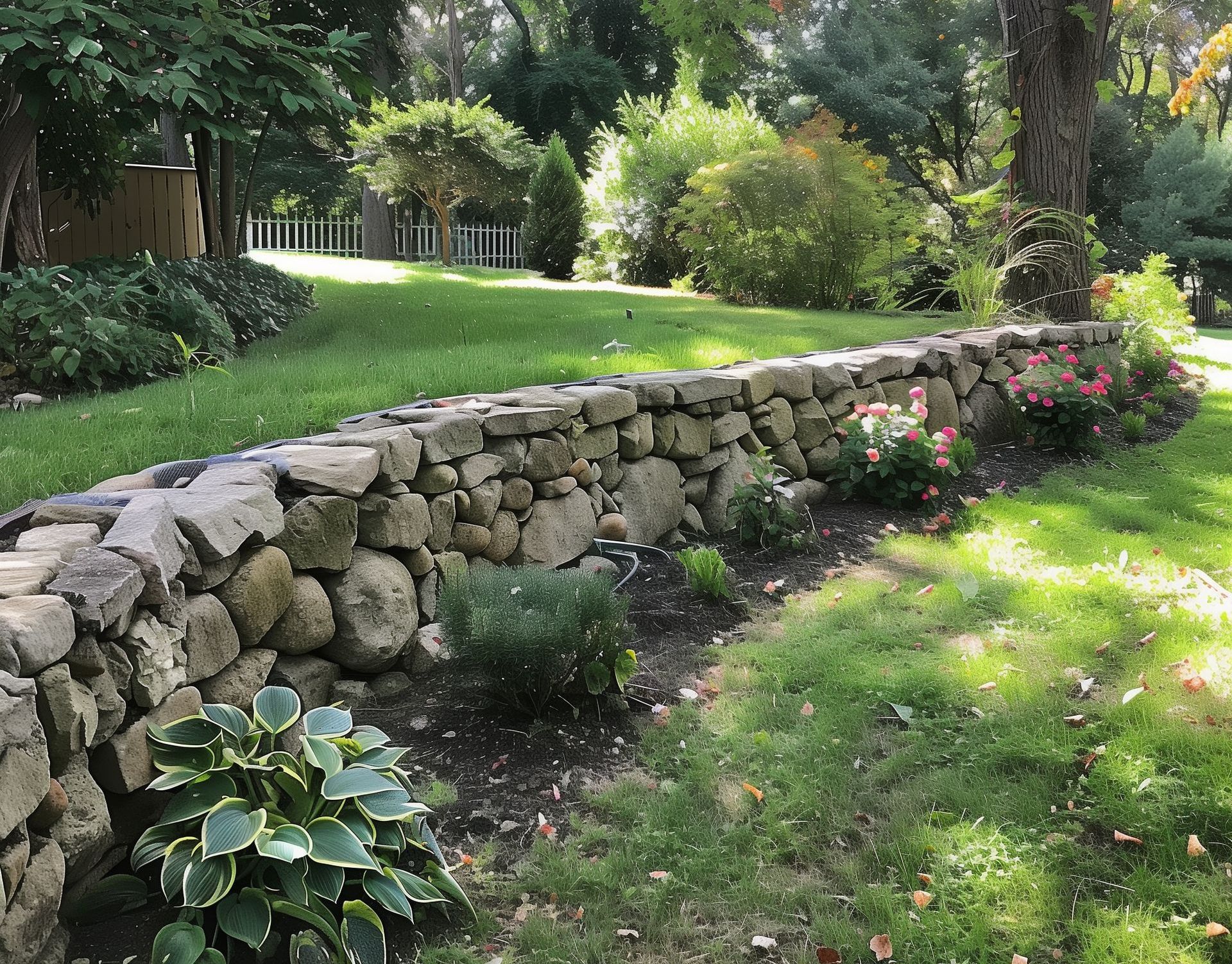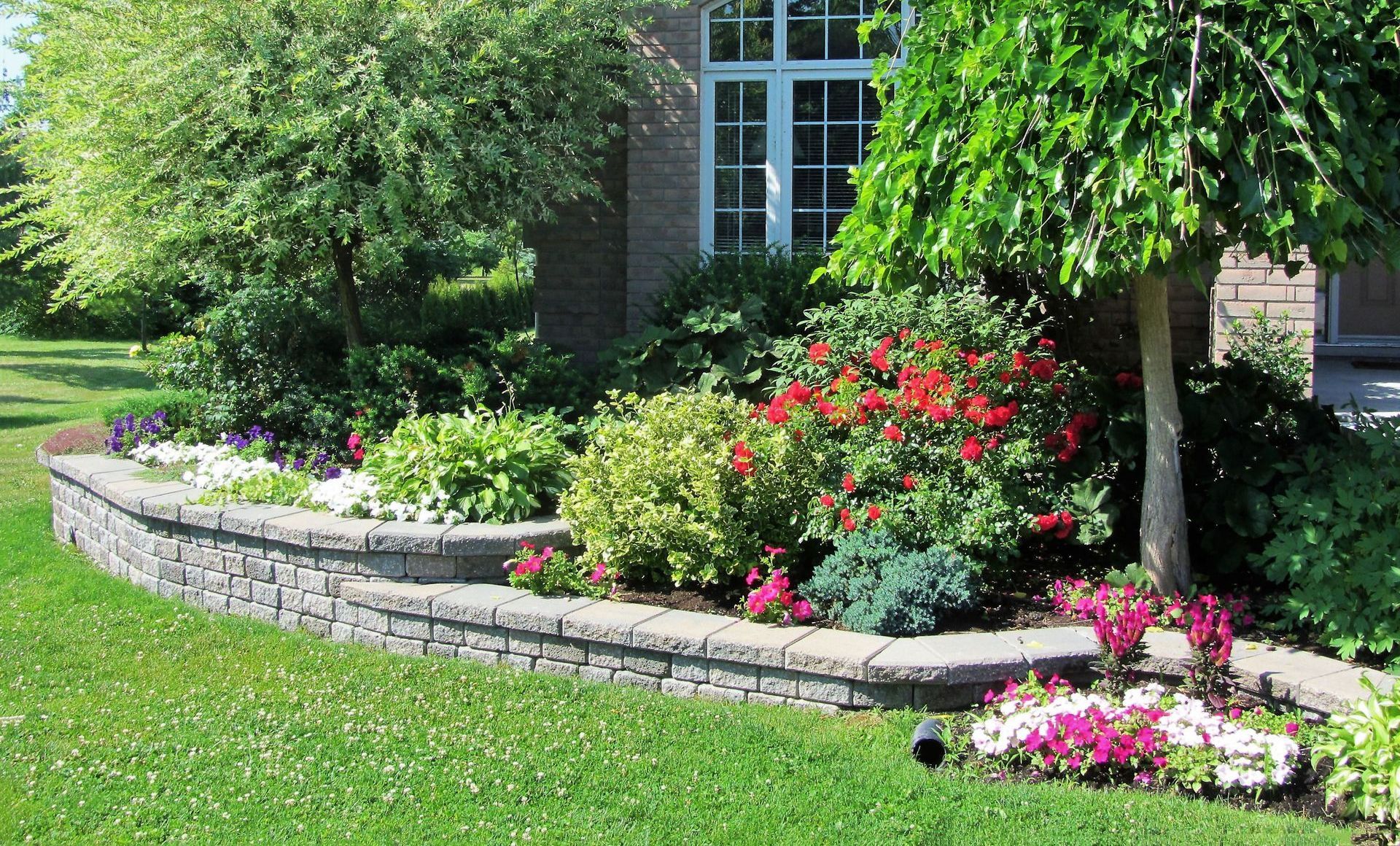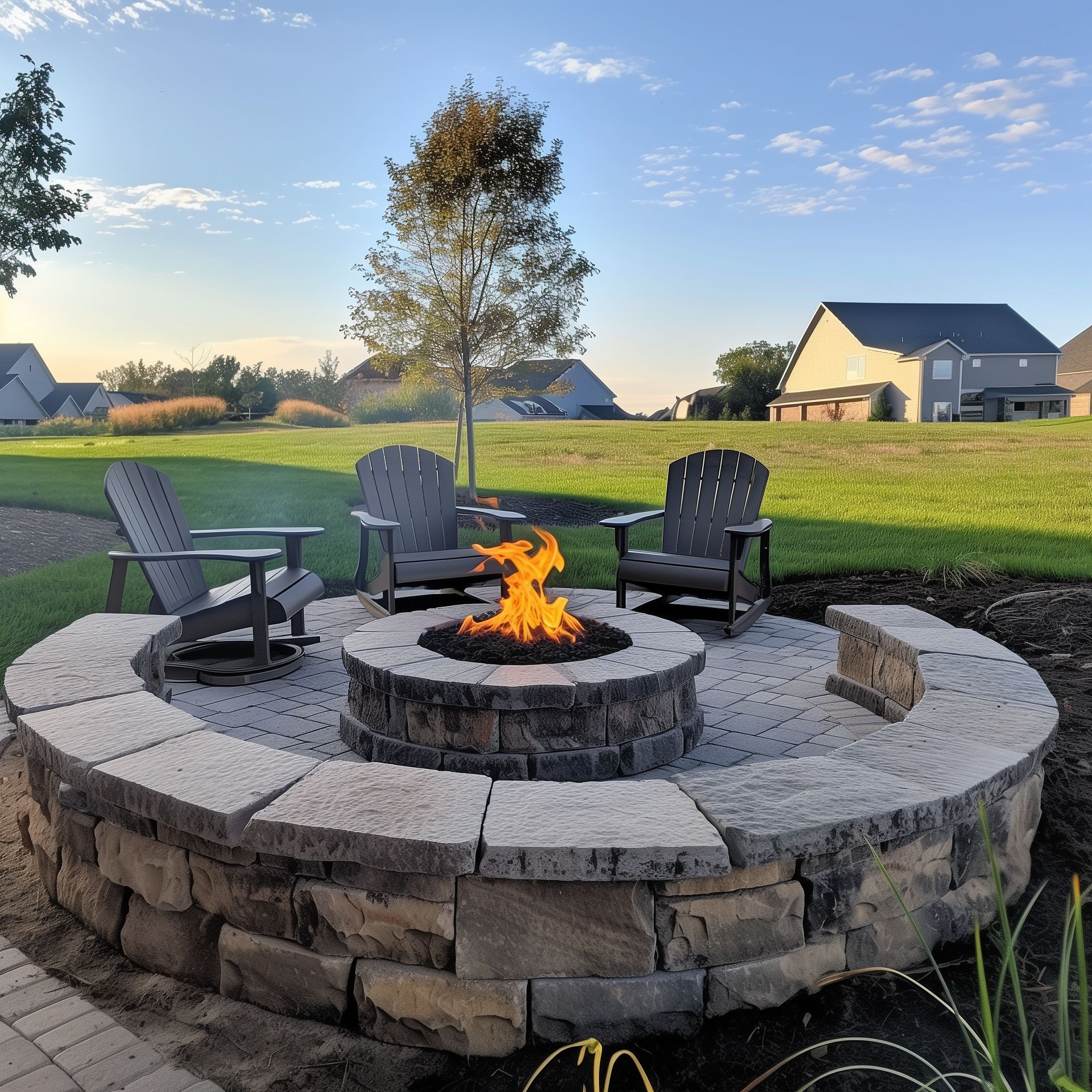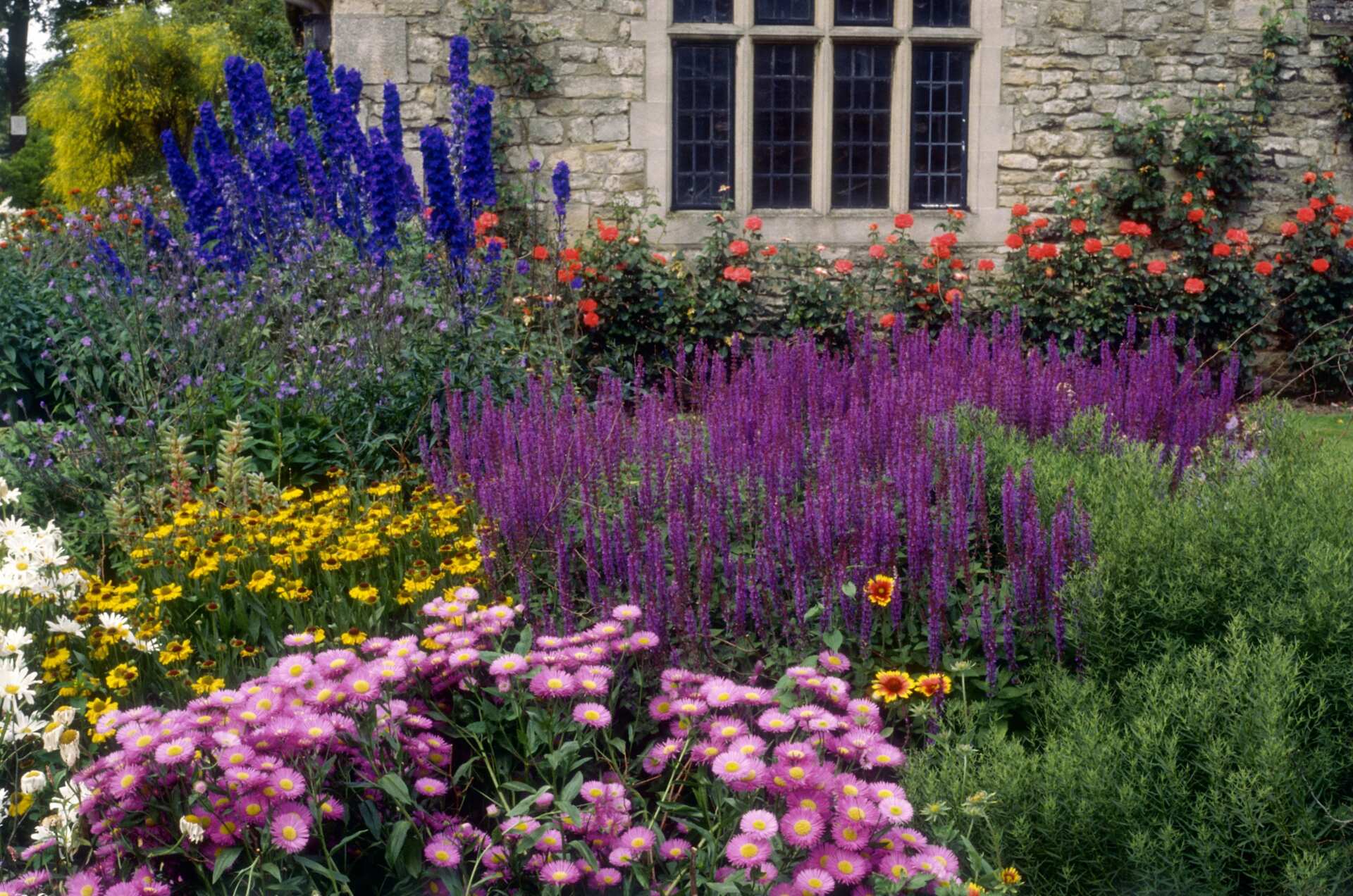
The beauty of starting a landscaping project from scratch is that there are no wrong answers when it comes to which flower colors you choose for your new garden beds. The world is your oyster!
While there are no right or wrong flower colors, you can choose varieties that complement each other, the space, and even your home. In this post, we’ll look at the methods you can use to narrow down your flower options and create dynamic gardens that will wow passersby and increase your home’s curb appeal .
Use a Color Wheel
Remember middle school art class, where we learned all about the color wheel? Time to refresh your memory, because it’s going to come in handy here.
A basic color wheel, like the one above, will give you a broad outline from which to start. A variety of shades are included in these six major color groups, giving you countless options for your flower gardens.
Color Schemes
Gardeners divide plantings into four main color schemes: monochromatic, complementary, analogous (or harmonious), and triad. Within these groupings, flowers belong to further subgroups, including the following:
- Warm-colored flowers are going to be in shades of yellow, orange, and red.
- Cool-colored flowers are going to be in shades of blue and purple, along with silver and white.
- While white can be used on its own to striking effect in a monochromatic garden (more on that below), it can also be used as a transitional color, and goes with just about anything.
- Bright flowers will energize a space. In full sun, these will really shine, and will draw the eye. These will make a space seem smaller, so are recommended for large yards. Bright colors are also great for highlighting landscape features.
- Pastel flowers will set a peaceful mood. Light, pastel-colored flowers can be used in shaded areas to brighten the space. Pastels are also great if you have a smaller space that you would like to feel more expansive.
Monochromatic
Flower beds in monochromatic colors is a classic look. There are a couple ways to achieve this look, either by using a variety of plants all in the same hue, or using different tones of the same shade, with a mix of flower sizes and textures.
Popular monochromatic color schemes include shades of pink, an all-white garden, or shades of purple. Same-color gardens are great fun to put together, especially if you decide to plant a variety of flowers so the garden comprises many textures.
Many flowers, such as roses, tulips, petunias, begonias, hydrangeas, and geraniums, are available in a variety of colors. Just because you want a monochromatic color scheme doesn’t mean you have to leave your favorite plants behind!
Analogous
Choosing flowers with analogous colors means that their colors are next to each other on the color wheel. For example, red and orange flowers paired together is a popular choice, as are blue and purple flowers. This is another color combination in which you can work in shades of colors for a gradient effect. This will help unify a garden in a similar way to a monochromatic color scheme, but allows for a larger range of color.
Complementary
Complementary colors are those that are across from each other on the color wheel. Using this method, you would want to pair orange and blue, red and green, and purple and yellow (and if you’re a Vikings fan, this pairing can also serve to show your Minnesota pride). These high-contrast color combinations provide excitement and add visual interest to any garden. Complementary colors have the effect of intensifying each other, making each stand out more than if they were on their own. If you’re looking for a vibrant garden, this may be just what you want.
To tone it down just a bit, mix bright and pastel flowers in these gardens, as in the above photo. You’ll still get the vibrancy that comes from planting in complementary colors, but with a touch of softness.
Triad
For a bold look, plant flowers that are in a color triad. This essentially means going every-other around the wheel, so red, blue, and yellow flowers would be planted together, or purple, green, and orange flowers together.
This way of planting can be a little tricky, but is absolutely worth it, providing stunning gardens when all is said and done.
Complement Your Home
The color of your house is a little trickier to change than the colors of your garden, and you want the landscaping to blend in and accentuate the beauty of your home.
- Houses in more natural colors, including greens, browns, and beige, are easiest to match. Just about any flower colors you choose will look good against this backdrop.
- Likewise, muted-color homes (those with gray in their pigment) are fairly easy to complement with flowers. Feel free to coordinate varying shades of flower colors to complement the house color. Luckily, with these tones, you don’t have to match colors exactly.
- When working with a pastel-colored house as a backdrop, you can choose flower colors either to relate or contrast with the house color. Homes that are cool in color work well with cool-colored plants, and homes that are warmer in color look nice with warm-colored plants. If you like more contrast, try pairing flower colors that are complementary to the house color. For example, if your house is a pale blue, try planting light orange daylilies out front.
- Brightly colored homes make a statement all on their own, but adding vividly colored flowers will make it pop all the more. If you can, match the house color for a strong look throughout the year.
Mulching
Another factor to consider is the color of your mulch . Mulch comes in a few different colors, and you want to choose one that complements both your home and the flowers you choose. Two of the most popular mulches we use are milk chocolate and dark chocolate. Milk chocolate mulch is perhaps the most versatile, matching houses with more neutral colors and those in the middle of the color spectrum and blending in well with just about any plants. Dark chocolate mulch works well with bright-colored plants and against houses that are white or pastel.
Despite this guide’s focus on flower gardens, don’t feel limited! Foliage comes in all sorts of colors, too, and can be used to accent gardens for wonderful effects. And when it comes time to decide where your new gardens should be placed, we’re happy to help! With over 15 years in the landscaping business, our experts have the experience and eye to make your dreams a reality. Give us a call at 763-568-7251 or send a message through out quick quote system to start planning.
The post Choosing Flower Colors for Your Landscape Design appeared first on KG Landscape Management.
Ready to Start on Your Next Project?
Call us at (763) 568-7251 or visit our quick quote page.
